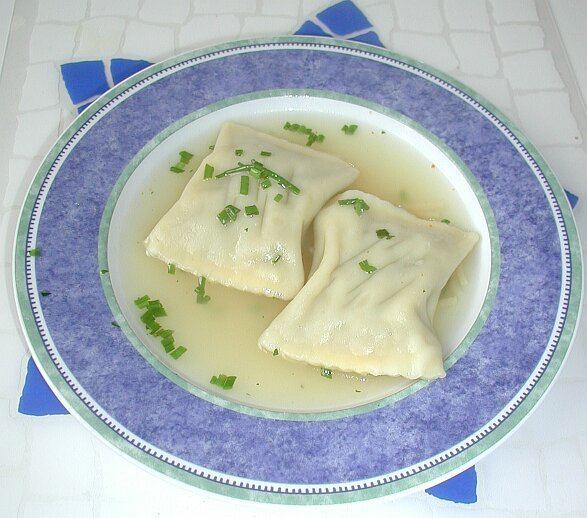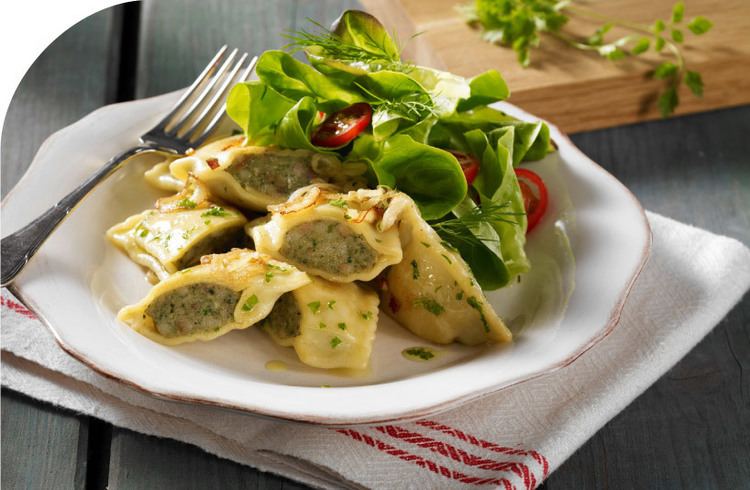Place of origin Germany | ||
 | ||
Similar Spätzle, Schupfnudel, Wurstsalat, Leberkäse, Ravioli | ||
Swabian maultaschen german everyday cooking video recipe littlegasthaus
Maultaschen (singular Maultasche ) is a traditional German dish that originated in the region of Swabia (in Baden-Württemberg). It consists of an outer-layer of pasta dough which encloses a filling traditionally consisting of minced meat, smoked meat, spinach, bread crumbs and onions and flavoured with various herbs and spices (e.g. pepper, parsley and nutmeg). Maultaschen are similar to the Italian ravioli but are typically larger in size—each Maultasche being approximately 8-12 centimeters (3-5 inches) across. They are almost invariably square or rectangular in shape.
Contents
- Swabian maultaschen german everyday cooking video recipe littlegasthaus
- Cooking with fione week two maultaschen
- History
- Preparation
- References

On 22 October 2009, the European Union recognized Maultaschen (Schwäbische Maultaschen or Schwäbische Suppenmaultaschen) as a "regional specialty" and remarked that the dish is significant to the cultural heritage of Baden-Württemberg. This measure provides protection to the integrity of the dish, mandating that genuine Maultaschen are only produced in Swabia, a historical region that was incorporated into the modern German states of Baden-Württemberg and Bavaria.

Cooking with fione week two maultaschen
History
In Swabia, Maultaschen are the traditional dish associated with the Lenten commemoration of Maundy Thursday and Good Friday. During Lent, Catholics and other Christians are encouraged to refrain from eating meat. However, Maultaschen are humorously associated with these days because the meat in the dish is concealed under the pasta dough and cannot be seen by God. Among the anecdotal stories regarding the origin of the dish, one claims that Maultaschen were created by the Cistercian monks of Maulbronn Abbey for that purpose. Indeed, a Swabian German nickname for the dish, Herrgottsbescheißerle, means "small God-cheaters".
One of the earliest mentions of the name Maultaschen is associated with several recipes in a 1794 cookbook—however, these are recipes for sweet desserts, and not a savory meat-filled entree.
The name Maultaschen is a compound word and could derive from three possible meanings: The first being that Maultaschen comes from the combination of the noun Maul referring to the mouth of an animal and Tasche, which means "bag." Thus, Maultaschen literally would mean "feedbag"—as in a bag used for feeding livestock—and probably derives this name from its appearance. The second meaning could be that from an archaic word—either Maultatzen or Maultatschen—for a "slap in the face." If this were its origins, the name would be a comparison between a swollen cheek after being slapped with the shape and appearance of the dish. The third explanation might be just a reference to Maulbronn Abbey and be short for Maulbronn-Taschen.
Preparation
Maultaschen are traditionally prepared in three ways, either:
Some recipes for Maultaschen use bacon for the meat filling.
